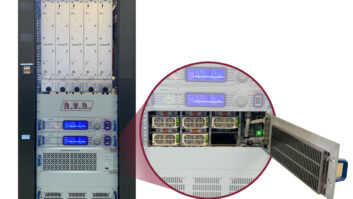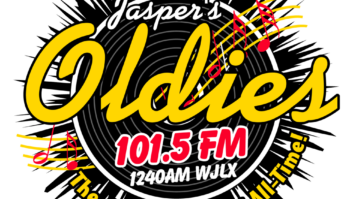BOLOGNA, Italy — The term “direct band” identifies a circuitry feature in broadcasting equipment not really visible to the human eye but very influential in terms of the structure and the final performance of the product.

The RVR Barracuda TX10KW Transmitter
It represents a real turning point in the development of the architecture of radio and TV broadcasting systems, and has been made possible by the introduction of new-generation ultra-fast nanotechnology components.
RVR Elettronica SpA, through an agreement with ultra-fast D-to-A converter specialist Analog Device, was one of the first Italian firms to apply “direct band” technology to its FM and digital TV modulators. The company’s experience, dating back to the dawn of the direct band era in 2008, is now well-established and is applied to both its FM radio exciters and its TV modulators.
NO COIL
With direct band technology what was once a complex RF stage for passing from the IF frequency to the in-band frequency is now a single FPGA-piloted component that generates the signal directly in band without the classic RF link and coil.
The main advantages are the quality of the RF signal generated and its greatly enhanced characteristics. Because there are no subsequent stages for the jump to higher frequencies, as is the case with upconverters, noise and intermodulation performance are much better.
Another great advantage is the simplification of the circuitry and the testing, which helps reduce production costs. All of the classic coils of RF circuits, which took up much time and attention, have disappeared.
The FPGA software that pilots the in-band DAC is able to generate signals on all the frequencies from bands I to IV, using any analog or digital modulation standard. The basic version of the RVR Blue Digital Video, for example, contains the 8VSB (USA) and the DVB-T (Europe) standards, both selectable from the user interface.
A simple SMD (surface-mounting device) and appropriate software can generate RF modulations up to 1 GHz without any need for manual adjustments. Moreover, the repeatability of production, based on the same components, is extremely high on account of the use of digital SMD technology.
A third major advantage is the integration of all the functions in a single engine, the FPGA, which, with a single clock, synchronizes all the functions.
SINGLE CLOCK
With a TV modulator, the subsets that have to interact in perfect harmony include the ASI input stage, the RF modulation generator, the pre-corrector and the output equalizer, the SFN synchronization stage in the GPS phase and more. Having a single digital core with a single clock that handles all these functions at very high speed means ensuring perfect synchronization.
The challenge and RVR’s economic investment in direct band have been considerable. It has taken highly skilled personnel, expensive and complex technology able to perform tasks ranging from the simulation of complex multiplayer printed circuits to the writing of software in various advanced languages.
But given the excellent results obtained, it has been worthwhile and represents an essential commitment for anybody wanting to compete in the broadcast market and to offer products of the highest quality.
Paolo Tassin is manager of the R&D Department at RVR Elettronica.
For information, contact RVR in Italy at telephone: +39-051-6010506, or visit www.rvr.it.












